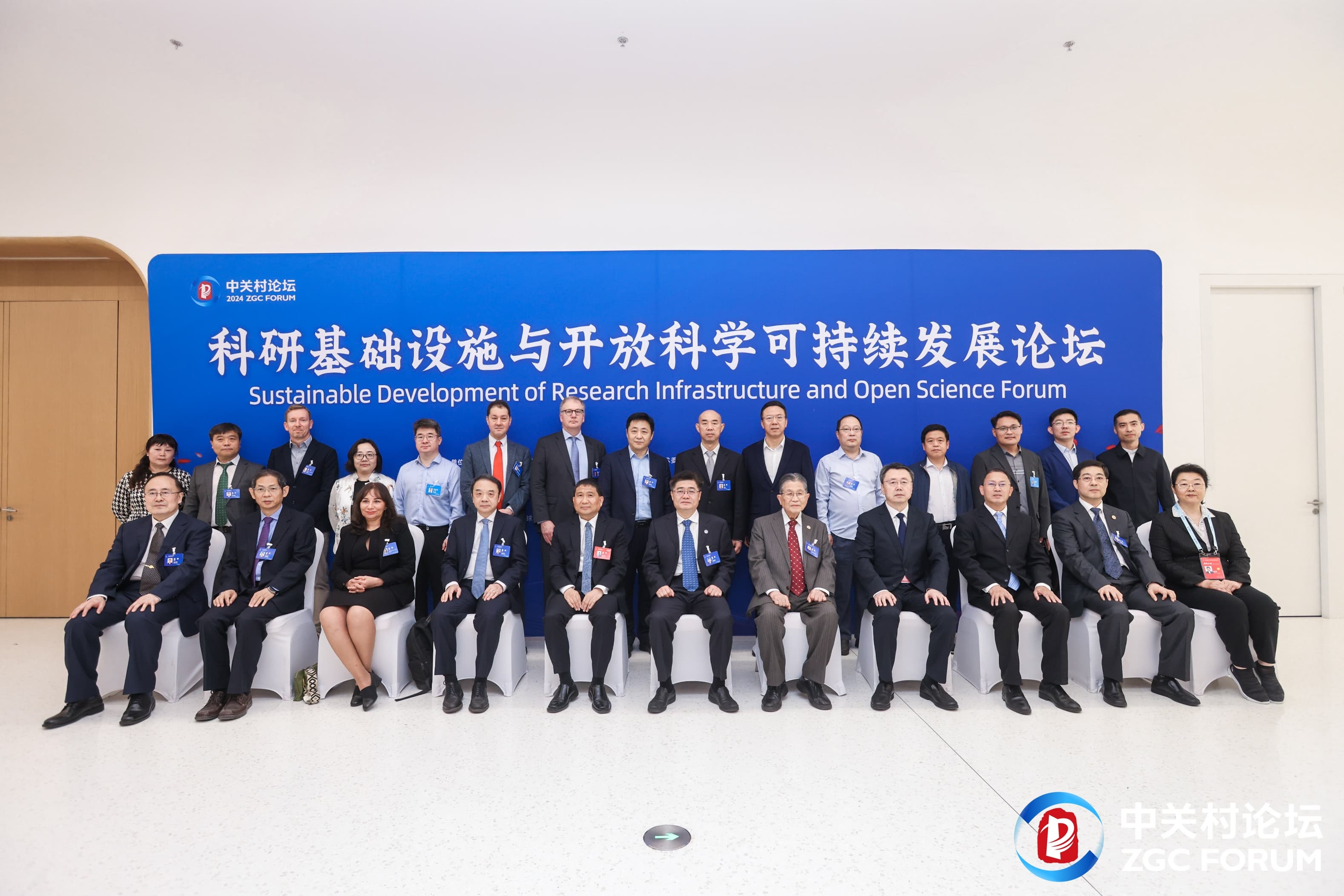EGI at the Forefront of Open Science: a Look at EGI’s Collaboration in China

In April 2024, EGI was invited to participate in the “Research Infrastructure and Sustainable Development of Open Science” parallel session of the Zhongguancun Forum in Beijing, China. Established in 2007, the Forum is the largest innovation and development event in China, and over the years, it has grown into an international event for enhancing global innovation in science and technology.
The parallel session on Open Science was divided into five parts: leadership speeches, launching a new open science platform, a keynote speech by Prof Fujishima Akira, 2004’s Nobel Prize for Chemistry, a panel discussion and thank-you speeches.
Our colleague Gergely Sipos, head of the Department of Services, Solutions and Support, contributed to the panel discussion, shedding light on the crucial role of computational and data infrastructures in the era of big data open science.

The panel discussion was hosted by Fu Shouqing, Chief Engineer of Zhongguancun National Laboratory. Besides Gergely Sipos from EGI, other panel members were Lv Li, a researcher at the Institute of Physics of the Chinese Academy of Sciences, Joe Miller, director of the Global Biodiversity Information Facility (GBIF), Arnout Jacobs, president of Springer Nature Group Greater China Region and Lynn Li, President of Elsevier Greater China Group. The panel elaborated on the effects, problems, solutions and significance of major research facilities in boosting global openness and innovation in the era of Open Science. The contributions stressed the importance of a more open approach to science, advocating for the accessibility of research outputs beyond just open access papers. They also highlighted the need for quality control measures to avoid “watering up” the scientific landscape with poor quality, sometimes AI-generated contributions.
As EGI has been collaborating for a long time with the National Science Library, which facilitates Open Science for the Chinese Academy of Sciences (NSL CAS), on the Global Open Science Cloud and also has a Memorandum of Understanding in place with the Computer Network Information Center (CNIC) of the CAS, Gergely was invited to a number of working meetings:
At NSL CAS, he gave a seminar presentation to staff members and PhD students on how EGI supports open science and artificial intelligence techniques with computational resources, frameworks, and projects such as iMagine and the European Open Science Cloud (EOSC). NSL staff presented their PubScholar system, which integrates resources from the Chinese Academy of Sciences, including scientific and technological achievements, scientific publications, and academic exchange resources.
The meeting at CNIC covered the status of the Global Open Science Cloud, an initiative to co-design and co-build a cross-continental federated e-infrastructure and virtual research environment for global cooperation and open science. The partners also exchanged information about jointly supported scientific communities, including WeNMR, which used over 9 Million CPU-hours in the past 12 months from federated EGI resource centres, including the CSTCloud operated by CNIC.
